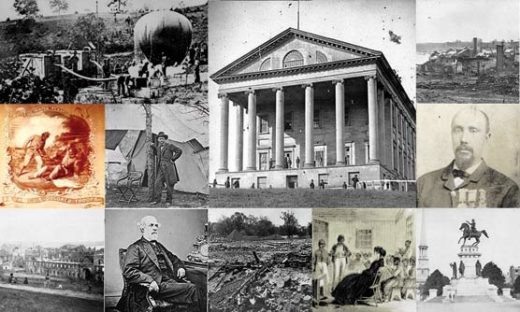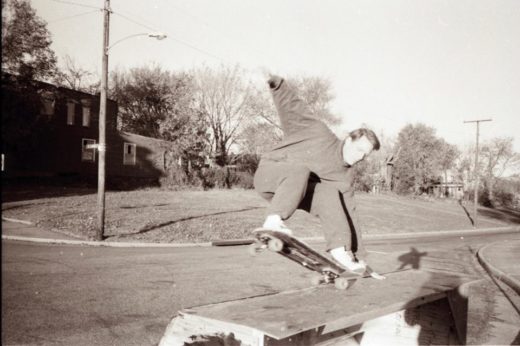 1989. Courtesy of William Pickett.
1989. Courtesy of William Pickett.
Category Archives: history
New ‘Oregon Hill Terribles’ Patches
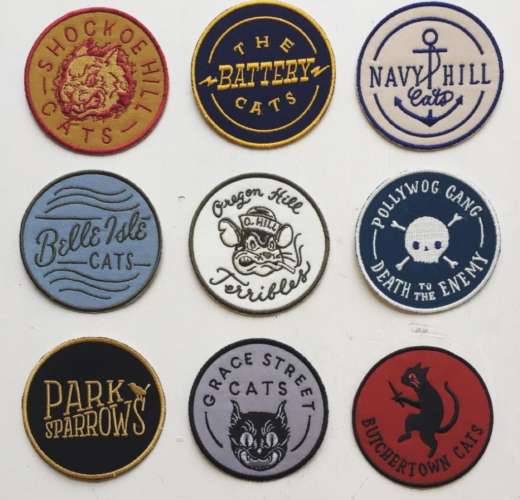
John Murden at Church Hill People’s News has a post on this–
Clara Cline at The Wild Wander has these fantastic Boy Gangs of Richmond patches available. Pick’em up at this weekend’s Richmond Craft Mafia Handmade Holiday event.
The names are taken from Charles Wallace’s The Boy Gangs of Richmond in the Dear Old Days: A Page of the City’s Lesser History, an out-of-print history of the city’s rapscallion youth by Charles M. Wallace from 1938.
Snowy Van
William Pickett’s van in front of 718 S. Laurel Street in ’84.
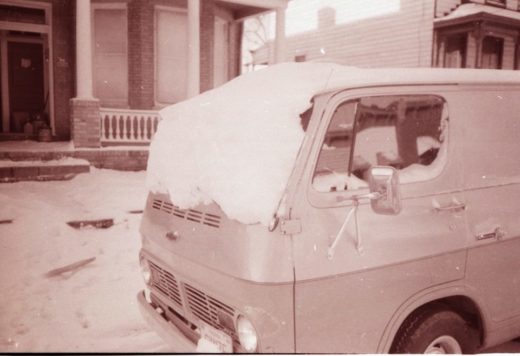
Snake Season Is Over
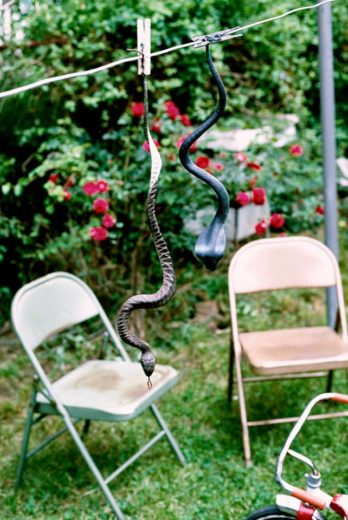
Rubber Snakes, Oregon Hill, Richmond, VA (1990), courtesy of the Bill Altice collection.
Last Day Of The Previous Lee Bridge
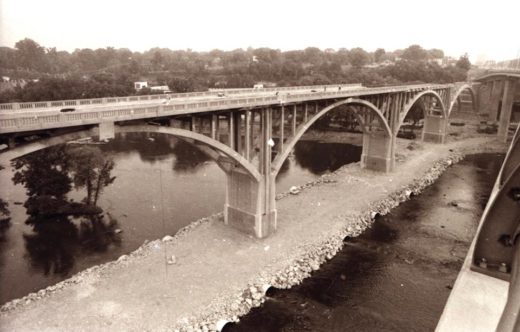
Courtesy of Billy Pickett. By the way, in appreciation of allowing his photos to be posted here, here is his business card-
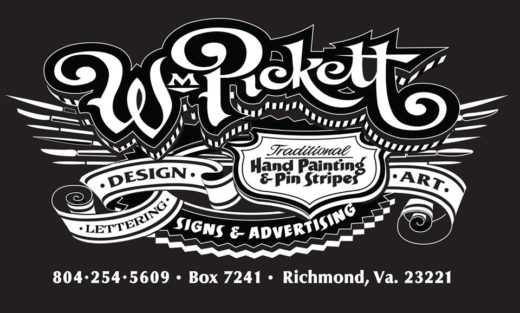
New Interpretive Sign On North Bank Trail
There is a new interpretive sign beside the canal on the North Bank Trail showing the location of the old water works below Hollywood Cemetery.
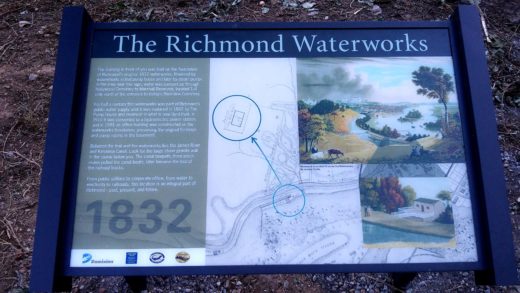
Laurel and Broad
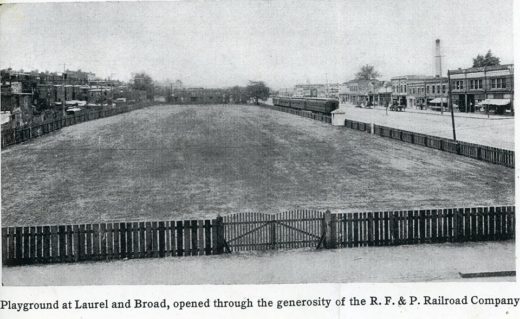
This photo shows the RF&P RR train tracks on Broad Street in the first quarter of the 20th century. This view (maybe 1915?) is westward, with the Elba train station at the rear of the view. This playground was arranged through the R.F. & P. RR by “Mrs. Bolling, of the Richmond Playgrounds Association”. It harkens to a time when Oregon Hill could sort of claim to extend to Broad Street.
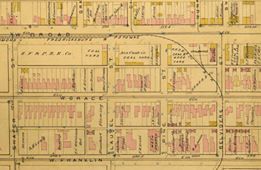
Here is part of the 1889 Baist map, which shows how the train turns from W. Broad to Belvidere then heads down past the penitentiary. The train tracks turned at Pine, thence south on Belvidere, and turned east along Byrd street, entered level, through a tunnel, to continue downtown to the old Byrd street depot.
(Special thanks to Richard Lee Bland and Fred Rodgers for the images and history notes, as seen on the Fans of Monroe Park FaceBook page.)
China Street circa 1990
Photo courtesy of Bill Altice.
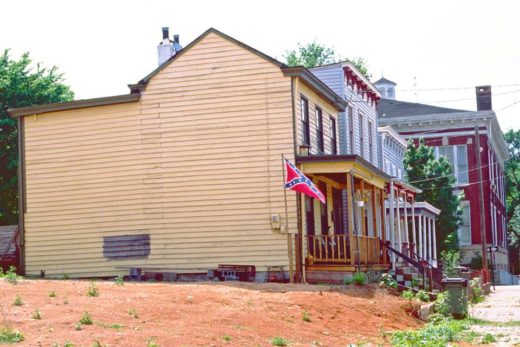
Throwback Thursday: Hotel X
Bad photo of most of the cover of Hotel X’s Residential Suite album, recorded in 1993 and released in 1994 on SST Records
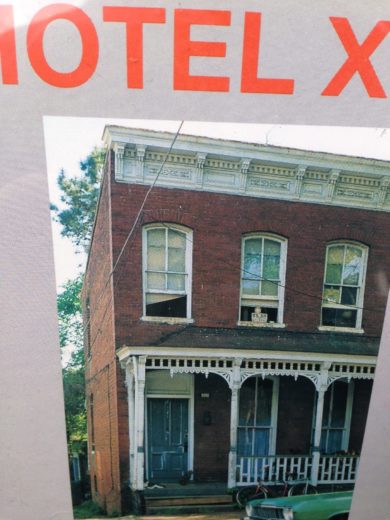
Before it was the name of the still-morphing local avant-garde jazz/rock band, it was the nickname of this Oregon Hill house on Idlewood that used to often offer lodging for touring musicians.
And tomorrow night:
Kokanko SATA + Assaba DRAMÉ + Lamine SOUMANO
Malian String Trio adds RVA to U.S. tour, reveals the Mande touch in Jazz and the Blues
HOTEL X
Richmond’s Afrodelic Funk experience.
8-piece band playing original African-inspired groove music
Friday, 23rd September 2016
At the Neighborhood Resource Center of Fulton Hill
1519 Williamsburg Road, Richmond, VA 23231
www.nrccafe.org
This concert in honor of Mali’s National Independence Day will benefit the Segou-Richmond House. Kokanko’s fantastic trio is lending their gifts to help VFOM raise funds for this joint project between our two sister cities: The Segou-Richmond House will be a community center to support removing barriers to girls education and social empowerment through sports, the arts and IT. On 6 acres of land near the Niger River, donated by local Cheick Mansour Haidara Foundation, the Virginia Friend of Mali and Segou’s Sister City Committee has begun construction of the site’s water source – a 10 meter deep well – that will facilitate the making of bricks, the playing fields and next phases of building.
Continue reading
Richmond In Civil War’s End Photos Tour On Saturday
From National Park Service press release:
RICHMOND, Va. – This fall, park rangers from Richmond National Battlefield Park invite the public to enjoy a heaping helping of history while being active outdoors. Through the park’s Half-Day Hikes series, visitors can explore a variety of historical topics at the dates and locations listed below – all while enjoying the great outdoors! All programs are free and do not require registration.
September 17 – Richmond in Photographs (3-4 hours). Over 300 photographs were taken in Richmond in the immediate aftermath of the Civil War. This walking tour will focus exclusively on these images of a vanished landscape, providing participants a unique “then and now” opportunity to view the city. Ranger Mike Gorman is an expert in Richmond’s Civil War photographs and will lead the tour. Expect extensive uphill and downhill walking; visitors are advised to wear comfortable footwear, wear sunscreen, and bring water. Tour begins at Tredegar Visitor Center (470 Tredegar Street, Richmond) at 12:30 p.m.
